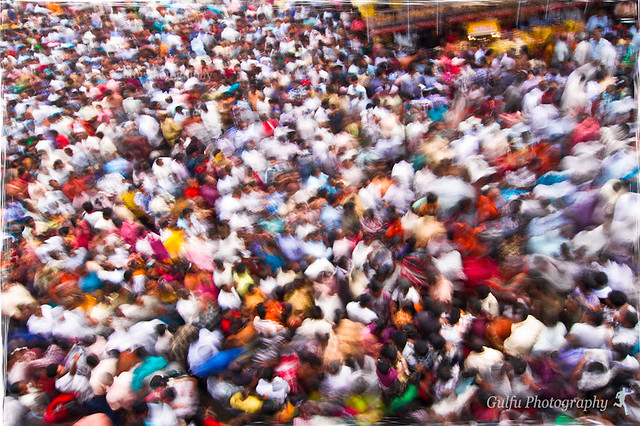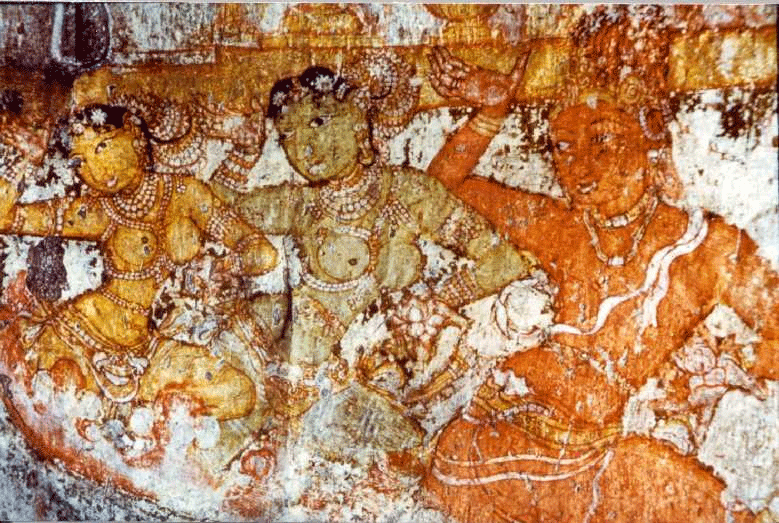During the recent Tipu Sultan birth anniversary controversy, a friend asked a fascinating but very logical question: “Where are Tipu’s descendants?” What happened to his sons off his official Sultana and of course, all the progeny off his mistresses, because Tipu Sultan of course kept a harem of women, like every ruler in the world. Thinking about it, this contributes to a fascinating narrative. Tracing Tipu Sultan’s lineage is easy, because his descendants have kept records. It would come as a surprise that his lineage is still alive and well in Kolkata, where the British had shipped Tipu’s sons after his death to keep them from claiming his kingdom and power. Having lived there for a couple of centuries now, Tipu’s direct descendants identify themselves as “Bengalis” now and not as Mysoreans or Kannadigas.
Tipu’s survivors had it easy because he was a comparatively modern ruler and the British seemed to be benevolent towards the survivors of their vanquished. But what about the progeny of all the other, more ancient monarchs? India, over the many centuries its ancient history stretches to, has had hundreds of dynasties and thousands of kings both native and invader ruling over its lands, who we know from the history we learned in school as an endless parade of succeeding monarchs; sons replacing fathers as kings until the dynasty disappears with its last king and replaced by a new one. Ever asked yourself what happened to the last king and his family?
Lineages of the hundreds of princely states that existed during the British Raj are well known and in some cases celebrated like those of the Travancore Kings and Mysore Wodeyars. More recent kings like Tipu who were deposed by the British have had the last days of their lives and their descendants pretty well chronicled. The Durranis have their family tree documented and continuing even today; All eight children of the the last heir to the Sikh Dynasty, Maharaja Duleep Singh died issueless; The last Peshwa of the Maratha Empire Baji Rao II died under house arrest by the British while the lineage of the Chhathrapatis are well-documented (but several adoptions have seemingly left no direct descendant); (Hundreds of) descendants of the last Mughal, Bahadur Shah Zafar II have been found scattered all over the Indian subcontinent and so on. But there are hundreds more dynasties. What happened to all their descendants?
What Happened to all those Kings Descendants?
What happened to the children of the last of the Nandas, Guptas, Mauryas, Kanvas, Palas, Chola-Chera-Pandya-Pallavas, Kadambas, Chalukyas, Hoysalas, Vijayanagaras, the Muslim Sultanates, the Nayaks and so on? They ruled with such pomp and power and grandeur once upon a time, surely their survivors must be still living in all that glory somewhere (like in America)? Or more, as mentioned at the beginning, what happened to all the children borne by all the kings’ concubines and mistresses both willing and unwilling, “unofficial” issues but still direct descendants of the royal line? Why aren’t they visible like the Wodeyars? The answer, is: look around you.

Ancient India was a very violent place (as was most of the world). Except for some periods of stability (Guptas, Mauryas etc), most of our history is replete with kingdoms of various sizes constantly at each others throats, fighting bloody battles trying to usurp each other for territory, riches, power, women and ego. Kingdoms and dynasties would rise to great power and then fall regularly every 300 years on an average, generally killed off by weak rulers withering away prosperous empires they inherited on booze and bosoms, deposed off if not on the battlefield by coups of every hue: politics, revolt, blackmail, treachery, assassination and so on by family, courtiers, generals or anybody. The father-to-son inheritance of kingdoms would then cease and the main usurper would ascend the throne and start a new dynasty under his name. So what would happen to the family of the deposed monarch? What would Pushyamitra Shunga have done with Brihadratha Maurya‘s children after assassinating him and bringing the great Maurya dynasty to an end? Now, it does not require a PhD in historical research to know that the first thing a newly crowned monarch would do is get rid of all traces of his rival, starting with the sons to cement his legitimacy to the throne and avoid any future revenge-attempts. It is almost a given that once a coup is successful or a kingdom has been conquered, the family of the vanquished will be executed or rendered similarly incapable. This is why we do not see even one example in Indian history of a deposed dynasty reestablishing itself within a generation of it being declining (except the Mughals, of course).
So all the children of all those fallen kings were killed? Hardly.
In times of turbulence like wars or coups, as soon as it would become clear that the fall of the king/dynasty was inevitable, or in the great political upheavals of its aftermath, the royal family (usually wives and children) flee to escape torture, rape and execution, leaving behind all their riches and comforts. They escape with the help of the kings’ trusted aides or friends and travel as commoners to avoid robbery or detection by informers of the new regime. They will start a new life in a new place far away from the boundaries of their old riches, as nobodies with a backstory of being common refugees fleeing any of the wars that would then be raging in a hundred kilometer radius. In a couple of decades, as life goes on in pracheen Bharat, memories of their royal lineage will fade into the past like some old dream, which will be completely forgotten a couple of generations later, when they will vaguely be remembered as having arrived from some other place but always as part of the village, born and lived as commoners. A couple of hundred years later, no one, including they themselves will ever have an inkling of who their ancestors were or what their past was, as their descendants will have migrated again or have assimilated into new cultures with ever-shifting empirical boundaries, lost in the flow of time, like how Tipu’s descendants have become “Bengali”. As time passes, scattered lineages of erstwhile great kings will have mixed back into the great societal cauldron their great ancestors themselves rose from, their riches and glories fading into oblivion, going from world-renowned monarch pampered in luxury to poor peasants living in grinding poverty in a couple of generations. Yes, the same thing that happened with Tipu’s descendants, only which in ancient cases went unrecorded.

Itr is even more easier for “unofficial” offspring to go under the radar, as women just have to pick them up and run without having to bother for cover stories. It is said that 13-15% of all Caucasian males alive today are direct descendants of the Mongal marauder Ghengis Khan, because he was as interested in conquests of the sexual kind as he was of territorial ones. Our kings were no different in their exploits, and is possible that a huge majority of Indians, me included, have some kind of “royal” admixture in their DNA, results of some of our great grandmothers being at the receiving end of some kings’ desires. Maybe one was even the high queen who ruled over a king who ruled the kingdom. It could be anybody. That boy who served you tea at that roadside shop could be the direct 52nd great grandson of the great Raja Raja Chola who commanded a kingdom stretching from Udupi to the Ganges and Sri Lanka and Sumatra, or that pretty girl with curly hair could be the 68th great granddaughter of Chandragupta Vikramaditya the Great. I could be, you could be too, because that is how history rolls. And as most Indians are unaware of their genealogical history beyond past few generations, after which all of our grandparents become part of the mass of unknown of immaterial Indians who lived and died leaving no record of their existence, this is all but more possible. Even recorded descendants of once mighty rulers live simple and unrecorded lives today.
History pulls people up from nothingness into ultimate splendor and pushes them down into obscurity again. All the greatness and riches of people and even nations you see around you is only momentary in existence at best. (An average dynasty lasted for 300+ years, the current Republic is only 70 years old). If you look at history carefully, you can see all those countless people who passed by this world smiling at our relentless, cutthroat pursuits for some stupid momentary glory or riches, when we and our progeny, like theirs will invariably end up in the pits from where we first started off. I often wonder who my ancient grandfathers and grandmothers were, how they lived and died, because it was their suffering and sacrifices that resulted in me being here and being able to write all this… Oh if those ancient rocks could talk, they would’ve had some stories to tell…






Chola Royal Family Pitchavaram Zamindar Tamil Nadu are descendants of Raja Raja Chola
Pandya Royal Family Sivagiri Zamindar Tamil Nadu are descendants of Pandya Dynasty Kings
Pallava Royal Family Udayarpalayam Zamindar Tamil Nadu are descendants of Pallava Kings
present Chola-Pandya-Pallava-Kadavaraya-Sambuvaraya descendants registered their “CASTE” as
“Agnikula Kshatriya” in Andhra Pradesh
“Vanniyakula Kshatriya” in Tamil Nadu
“Thigala Vahnikula Kshatriya” in Karnataka